The Importance of Medical Oxygen Concentrators in Healthcare
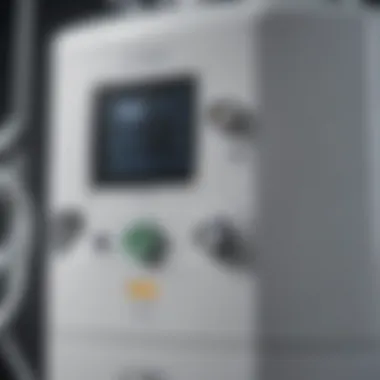
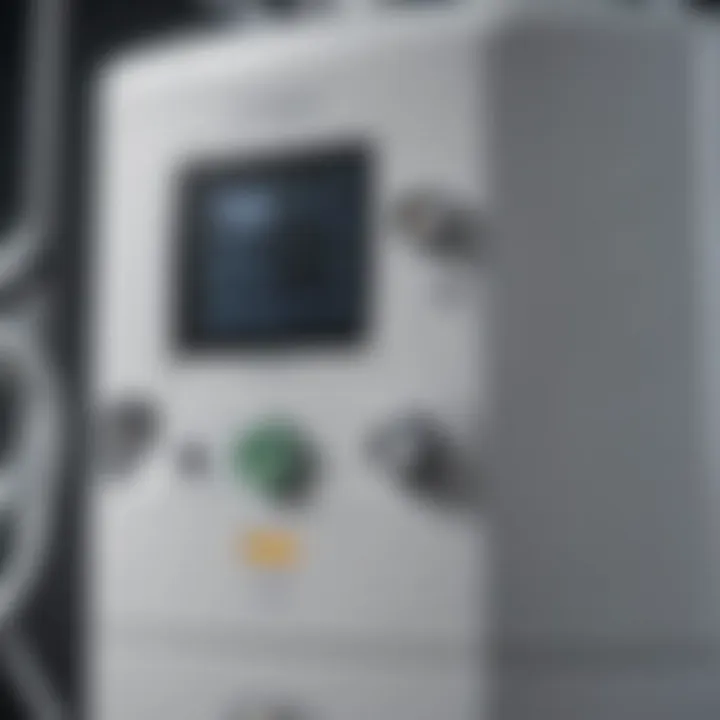
Intro
In a world where the air we breathe can be as crucial as the food we eat, medical oxygen concentrators have become indispensable in providing respiratory support. These devices have revolutionized the management of patients with various respiratory conditions, allowing them to lead more fulfilling lives. They extract oxygen from the ambient air, concentrating it for medical use. This technology has advanced significantly, adapting to the rising needs of patients and healthcare providers alike.
The ongoing evolution in the field of medical oxygen therapy is shaking up the healthcare landscape. Different patients have unique oxygen needs, and oxygen concentrators cater to those variations by offering a steady supply of purified oxygen. This narrative will explore how these devices function, their critical applications, and the technological innovations that enhance their effectiveness.
Key Findings
Summary of the Main Results
Research indicates that medical oxygen concentrators play a key role in outpatient and home healthcare settings. For patients suffering from chronic obstructive pulmonary disease (COPD), asthma, and even COVID-19, these devices provide a reliable source of oxygen without the need for bulky tanks. They are portable and can be used in various settings, from hospitals to patient homes.
- Oxygen concentrators can deliver high-flow oxygen, making them suitable for severe cases.
- The latest models are lightweight and have longer battery life, enhancing mobility for users.
- Technological improvements have led to quieter operations, offering a better user experience.
Significance of Findings Within the Scientific Community
The findings regarding oxygen concentrators underline their importance in both clinical and home settings. As healthcare moves towards patient-centered approaches, these concentrators have emerged as pivotal components in ensuring effective respiratory care. The data shows not just their efficacy in supplying oxygen, but also the broader impact on patient quality of life, which is essential for the ongoing discourse in healthcare optimization.
"Medical oxygen concentrators represent a leap forward in respiratory care, allowing patients greater freedom and improved outcomes."
Implications of the Research
Applications of Findings in Real-World Scenarios
The implications of the research extend beyond theoretical applications. In practice, oxygen concentrators enable patients to manage their conditions more effectively. For instance, patients can now engage in social activities, enjoy travel, and maintain independence thanks to portable oxygen solutions. Healthcare systems are also recognizing the cost-effectiveness of at-home oxygen therapy.
Potential Impact on Future Research Directions
Looking ahead, the research suggests focusing on optimizing the efficiency of oxygen delivery systems. With continual advancements, future research might delve into the integration of artificial intelligence into these devices, tailoring oxygen delivery based on real-time data from patients’ biometric parameters. Additionally, the interplay between oxygen concentrators and telehealth services could drive further innovations in remote patient monitoring.
Prolusion to Medical Oxygen Concentrators
The introduction of medical oxygen concentrators marks a pivotal point in the evolution of respiratory healthcare. In an age where respiratory ailments are on the rise, these devices have emerged not just as tools but as lifelines for many individuals. Their significance stretches beyond mere functionality; they encompass a range of benefits that can significantly enhance the quality of life for patients who struggle with various conditions, particularly chronic obstructive pulmonary disease (COPD), asthma, and other respiratory disorders.
Understanding Oxygen Therapy
Oxygen therapy is a medical treatment that delivers oxygen to individuals who have low oxygen levels in their blood. This therapy is essential, as oxygen is a vital component for cellular metabolism and proper bodily functions.
- Key Aspects of Oxygen Therapy:
- A respiratory support for patients with chronic conditions.
- It can help alleviate symptoms like shortness of breath and improve overall stamina.
- It may be administered through various means, including oxygen tanks or concentrators.
Medical oxygen concentrators take on a critical role in this therapy, providing a steady supply of oxygen efficiently. Unlike traditional methods that rely on bulky tanks, these concentrators extract oxygen from the air, making them a more sustainable and user-friendly option.
Historical Context
The journey of oxygen therapy dates back to the late 19th century. Originally, patients received oxygen in a hospital setting, typically through cumbersome gas cylinders that necessitated frequent deliveries and refills. During this period, the need for a more practical solution became clear.
- Milestones in Oxygen Therapy Development:
- The concept of liquid oxygen began gaining traction in the early 20th century, offering a more portable option for patients.
- By the 1970s, advancements in technology gave birth to the modern oxygen concentrator, leading to significant changes in how oxygen was delivered.
These developments set the stage for today’s models, which are increasingly compact and efficient, allowing patients to manage their conditions more independently. It's important to note that the medical field continuously explores new technologies, aiming to enhance patient experiences and outcomes.
"Oxygen plays an indisputable role in modern healthcare, transforming how we approach treating respiratory disorders."
In sum, the role of medical oxygen concentrators cannot be overstated. They represent a significant shift from traditional oxygen delivery methods, offering benefits that are both practical and life-changing for countless individuals in contemporary healthcare.
Mechanism of Operation
Understanding the mechanism of operation of medical oxygen concentrators is crucial in grasping how these devices significantly enhance patient care in contemporary healthcare. The efficiency of these machines stems from their ability to take ambient air and extract the oxygen needed for patients, making oxygen therapy not just a possibility but a practical solution for many respiratory conditions.
Basic Principles of Oxygen Concentration
At its core, oxygen concentration involves a process known as "pressure swing adsorption" (PSA). This principle allows the concentrator to separate oxygen from other gases in the air. Ambient air primarily consists of approximately 78% nitrogen and around 21% oxygen, with trace amounts of other gases. The concentrator captures this mixture and uses a series of filtration and adsorption techniques.
- Ambient air enters the machine through an inlet. The air is then compressed to facilitate separation.
- Nitrogen is absorbed by the zeolite material within the concentrator while the oxygen is let through. This selective absorption focuses on keeping the oxygen concentrated.
- After the zeolite absorbs nitrogen, the pressure is reduced, releasing the nitrogen and thereby regenerating the zeolite for another cycle.
This process repeats multiple times, resulting in a steady stream of oxygen-enriched air directed to the patient.
Key Components
Several critical components contribute to the overall functionality of medical oxygen concentrators, each bringing unique benefits and features to the device. Understanding these components clarifies why oxygen concentrators are essential in modern healthcare.
Compressor
The compressor serves as the heart of the oxygen concentrator. It compresses the ambient air into the system, which is a vital step in the oxygen concentration process. One key characteristic of compressors in oxygen concentrators is their ability to deliver high performance while maintaining a relatively low noise level. This feature is attractive for home users who may require oxygen therapy over extended periods.
A unique feature of the compressor is the dual-stage configuration found in some models, which enhances efficiency and reduces wear and tear, potentially increasing the lifespan of the device. However, if the compressor fails, it can halt the concentrator's operation, making it crucial for users to monitor its performance and seek repairs when necessary.
Filters
Next in line are the filters, which play a critical role in ensuring that only clean air enters the system. Filters help remove dust, moisture, and other contaminants before the air is subjected to compression and the adsorption process.
The key characteristic that makes filters essential in oxygen concentrators is their multilayer design, which increases the surface area for trapping impurities. This multi-layered filtration enables quiet, uninterrupted operation. A notable advantage is that effective filters prolong the life of the concentrator by preventing damage from particles that may build up over time.
However, a disadvantage is that filters need to be replaced periodically, which can lead to downtime and increased costs for the user.
Zeolite
The zeolite adsorbent material is the unsung hero of the oxygen concentrator. Zeolites are specially designed to selectively adsorb nitrogen molecules, allowing oxygen to pass through. This property is what makes zeolite indispensable in the concentration process.
One remarkable feature of zeolite is its natural abundance and stability, making it a cost-effective choice for manufacturers and users alike. Additionally, zeolite's high adsorption capacity ensures that a significant amount of nitrogen can be removed very efficiently.
Yet, like all materials, zeolite can degrade over time. Its effectiveness can diminish with prolonged use, so regular assessments are essential to ensure optimal performance.
The operation of medical oxygen concentrators is designed to be user-friendly, ensuring that both patients and caregivers can navigate the complexities of respiratory therapy with confidence.
In summary, the components within the oxygen concentrator work harmoniously to provide uninterrupted oxygen therapy. Recognizing how these components function equips users with the knowledge necessary for effective management and utilization of the device.
Applications of Oxygen Concentrators


Medical oxygen concentrators play an essential role across various landscapes in modern healthcare. Their applications are as diverse as the patients they serve, making them indispensable tools for respiratory support. Understanding these applications allows healthcare professionals, patients, and caregivers to make informed decisions regarding management of conditions that require supplemental oxygen.
Home Use
For many individuals dealing with chronic respiratory issues like COPD or emphysema, oxygen concentrators provide a lifeline. At home, these devices offer a convenient way to maintain oxygen levels without the hassle of bulky tanks. In fact, the mobility they offer dramatically enhances the day-to-day lives of users. Imagine someone being able to walk around their house freely, or even step outside for fresh air without worrying about running out of oxygen.
- Convenience: Users can move around their homes with ease, carrying portable units. This mobility can greatly boost the emotional well-being of individuals who might otherwise feel confined.
- Personalization: Each oxygen concentrator can be tailored to meet the specific needs of a patient based on their prescribed flow rate by healthcare professionals.
- Efficiency: Unlike traditional gas systems, these devices eliminate the risk of running out of oxygen unexpectedly. Patients and caregivers alike can rest easy, knowing that continuous oxygen is a press of a button away.
Hospital Settings
In hospitals, oxygen concentrators serve as critical tools, especially in emergency and intensive care units. The ability to provide immediate and reliable oxygen support to patients is vital in saving lives.
- Scalability: Concentrators can be utilized in scenarios where multiple patients are in need. For instance, when there are sudden influxes of patients suffering from respiratory distress, hospitals can deploy concentrators to meet demand quickly without relying solely on tanked oxygen, which takes time to replenish.
- Cost-Effectiveness: Utilizing concentrators reduces the overall costs associated with purchasing and transporting oxygen tanks. Hospitals can redirect financial resources towards patient care, all while ensuring patients receive necessary oxygen support.
- Integration with Other Devices: Many of these concentrators work seamlessly with other medical equipment, further streamlining patient care workflows.
Emergency Situations
Emergencies demand rapid, efficient responses. Whether in ambulances, disaster relief scenarios, or mass casualty incidents, oxygen concentrators can be a game changer.
- Rapid Deployment: In emergencies, the ability to quickly provide oxygen can be life-saving. Concentrators allow first responders to deliver the necessary treatment without delays, unlike traditional methods which might require significant setup times.
- Lightweight and Portable: Many modern concentrators are designed to be lightweight, making them easily transportable in emergency vehicles. First responders can focus on patient care rather than worrying about equipment logistics.
- Reliability: Especially in situations where electricity might be uncertain, generalized backup batteries in some models allow continued operation if needed, ensuring no patient is left wanting.
"The importance of oxygen concentrators cannot be underestimated - it’s about providing life-saving support wherever it's needed the most."
In summary, the varied applications of medical oxygen concentrators underscore their significance in modern healthcare. From enhancing the quality of life at home, improving hospital care efficiency, to offering critical support in emergency settings, these devices are integral to respiratory health management.
Types of Medical Oxygen Concentrators
When it comes to medical oxygen concentrators, recognizing the variety is crucial. There are several types available, each designed with specific use cases in mind. Understanding these differences not only aids healthcare professionals and patients in making informed decisions but also enhances the effectiveness of respiratory support delivered. This section will detail three main types: portable, stationary, and pediatric oxygen concentrators, emphasizing their unique characteristics and potential benefits.
Portable Oxygen Concentrators
Portable oxygen concentrators (POCs) are game changers for those requiring mobility alongside oxygen therapy. They are generally lightweight and battery-operated, making it easier for patients to maintain an active lifestyle without being tethered to stationary units. Many POCs come with adjustable flow settings, allowing users to tailor the supply of oxygen to their immediate needs.
One of the most significant advantages of portable units is their practicality for travel. Patients can easily bring them on flights, road trips, or even simple errands, thus not compromising on their oxygen therapy while they live their lives. The independence offered by portable oxygen concentrators translates to improved mental well-being; individuals feel empowered and less restricted by their medical condition.
"With a portable oxygen concentrator, your world opens up again. You don't have to stay at home just because you need oxygen."
Stationary Oxygen Concentrators
Unlike their portable counterparts, stationary oxygen concentrators are designed to be used primarily at home or in healthcare facilities. They are typically more substantial and can deliver a higher flow rate of oxygen, making them suitable for individuals who need continuous support. One of the integral components is their larger capacity for oxygen storage, which allows for uninterrupted supply, especially important for those with more severe respiratory issues.
While they are not suitable for travel due to their size and weight, stationary units often have lower operational costs over time. Patients who spend most of their time at home can benefit from the increased comfort and reliability that these devices offer.
Pediatric Oxygen Concentrators
Pediatric oxygen concentrators cater specifically to the needs of children requiring oxygen therapy. These devices are typically smaller, lighter, and designed with features that prioritize safety and ease of use for younger patients. The flow rates are adjusted to accommodate the unique respiratory needs of children, and the design often includes quieter operation to avoid disturbing the child's environment.
When it comes to pediatric patients, adherence to oxygen therapy can be challenging. Hence, manufacturers often focus on creating a more engaging experience, sometimes by offering colorful designs or additional patient-friendly features.
In summary, each type of oxygen concentrator has its specific role, making them indispensable in the healthcare landscape. Understanding these distinctions allows patients and healthcare providers to choose the right device, optimizing the overall treatment experience. This knowledge ensures better management of respiratory conditions, fosters independence, and contributes to an enhanced quality of life.
Benefits of Using Medical Oxygen Concentrators
In today’s healthcare landscape, medical oxygen concentrators have become essential tools, fundamentally transforming respiratory care for many individuals. These devices are like a breath of fresh air itself—providing more than just oxygen, they offer several unique benefits. Below, we will unpack the significance of oxygen concentrators, exploring three key aspects: increased mobility, cost-effectiveness, and ease of use.
Increased Mobility
One of the standout features of medical oxygen concentrators is their ability to enhance mobility for patients who rely on oxygen therapy. Unlike traditional oxygen tanks, which can be heavy and cumbersome, portable oxygen concentrators are lightweight and easier to carry around. This portability allows individuals to maintain an active lifestyle without feeling tethered to a stationary unit.
When patients can go out for a walk in the park or meet friends for coffee, it can significantly improve their emotional and mental well-being. It's as clear as day that mobility is not just about movement; it’s about quality of life. The ability to engage in social activities or even carry out daily tasks can rekindle a sense of normalcy in a patient's life. Consider this: simply being able to enjoy a sunny afternoon outside can be a game changer.
Cost-Effectiveness
Cost is always a consideration when it comes to healthcare, particularly for long-term therapies like oxygen therapy. Generally, using oxygen concentrators can prove to be more cost-effective than traditional methods over time. The devices produce oxygen on-demand, eliminating the need for refills associated with liquid oxygen or compressed gas tanks.
Here's the crux: not only do you save on the recurring costs of oxygen supplies, but you also cut down on delivery charges from suppliers. Furthermore, as technology evolves, the initial investment in portable or stationary oxygen concentrators becomes increasingly justified as their prices have started to decrease relative to earlier models.
"The financial burden of oxygen therapy can be daunting, but medical oxygen concentrators can often lighten the load."
Ease of Use
Another appealing trait of medical oxygen concentrators is their user-friendly design. Most modern models are intuitive, boasting straightforward interfaces that allow patients to operate them with minimum instruction. Whether it’s a nurse helping a new patient or a family member assisting an elderly relative, ease of use is crucial.
Additionally, many devices automatically adjust flow rates according to the user’s needs, ensuring that patients receive the right amount of oxygen without having to fiddle with knobs and dials. Even more, the low maintenance requirement makes it appealing. Regular checks, occasional filter replacements, and an understanding of basic working functions can safeguard the device's longevity. It’s almost like having a reliable friend one can count on.
In summary, the benefits of using medical oxygen concentrators highlight their vital role in modern healthcare. They not only allow for increased mobility and offer a sensible cost-effective solution, but they also simplify the overall process of oxygen therapy, contributing to enhanced patient satisfaction and quality of life. Choosing to embrace these advances is choosing a breath of fresh air in respiratory support.
Challenges and Limitations
When diving into the world of medical oxygen concentrators, acknowledging the challenges and limitations becomes crucial. These devices, while revolutionary in delivering oxygen therapy, are not without their drawbacks. Understanding these aspects helps patients, caregivers, and healthcare professionals make informed decisions while navigating oxygen therapy.
Power Dependency
One of the major limitations of oxygen concentrators is their reliance on electrical power. Unlike traditional oxygen tanks that can be transported and used without an external power source, most concentrators need to be plugged in to function. This can pose significant challenges, especially in emergency situations or in locations with unreliable electricity supply.
The need for continuous power raises questions about portability and accessibility. For instance, when patients choose to venture outdoors or travel, they often face challenges in finding suitable outlets or adapting to battery-operated versions if available.
Moreover, power outages can render concentrators ineffective, leading to potential crises for users who depend on uninterrupted oxygen supply.
Maintenance Issues
Regular maintenance is a must for oxygen concentrators to function at their peak efficiency. Without proper upkeep, users may experience a drop in performance, which can directly affect their health. Across different models and brands, maintenance requirements may vary, but common tasks include filter replacement and checking for device malfunctions.
Filters play a crucial role in ensuring clean air is drawn in and concentrated. If they become clogged or damaged, the quality of the oxygen delivered can diminish, leading to health risks for patients. In addition, devices can accumulate dust and debris, necessitating routine cleaning to maintain efficiency.
An ounce of prevention here truly is worth a pound of cure. Regular servicing by professionals can be indispensable, though finding qualified technicians may not be easy everywhere—especially in remote areas.
Patient Compliance
Even with the best products on the market, patient compliance stands out as one of the biggest hurdles in effective oxygen therapy. Sometimes, patients might feel uncomfortable using oxygen concentrators, leading them to avoid usage altogether. This reluctance can stem from a variety of factors, including misconceptions about the devices, poor understanding of their benefits, or simply the burden of extra equipment.
Not using the concentrator as prescribed can lead to serious health implications, such as impaired oxygen levels and exacerbated respiratory issues. In some cases, patients may even misuse the settings or adjust the flow rates without proper guidance, leading to further complications.
To foster better compliance, education is key. Effective communication between healthcare providers and patients can dismantle myths and get users on board with their treatment plans. Initiatives that offer emotional and psychological support can also enhance adherence to oxygen therapy.
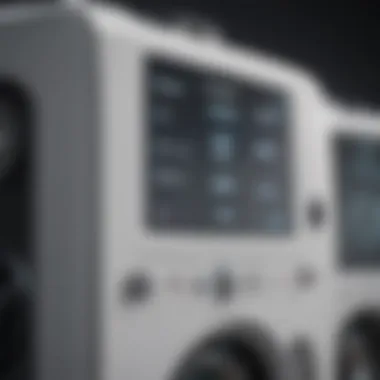
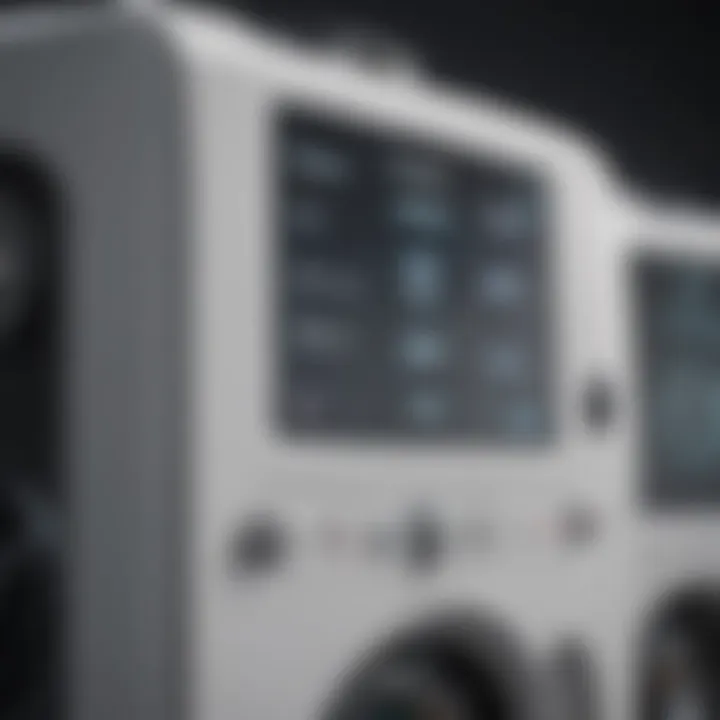
Even with the myriad of advances made in the technology of oxygen concentrators, addressing these challenges and limitations empowers users to leverage these devices to their fullest potential. Ultimately, careful consideration and proactive management can ensure they remain effective resources for respiratory support in modern healthcare.
Selecting the Right Oxygen Concentrator
Choosing the appropriate oxygen concentrator is akin to finding the right key for a lock. It ensures that individuals receive the necessary respiratory support that can dramatically improve their quality of life. This selection process is based on various factors specific to both medical needs and personal circumstances, making it a crucial topic in the realm of oxygen therapy.
Taking the time to assess what one truly needs leads not only to better health outcomes but also to enhanced user satisfaction. The right equipment will support a patient's lifestyle, whether they are using it at home, on the go, or in clinical settings.
Assessing Medical Needs
Before diving into the technicalities of different concentrators, it's important to understand the medical criteria an individual must consider.
Everyone's condition varies significantly. For instance, a patient with chronic obstructive pulmonary disease (COPD) might require a different setup than someone with asthma. These distinct needs dictate the specifications that should be sought in an oxygen concentrator.
- Patients must consult their healthcare providers to define flow requirements, which will guide the selection greatly.
- It also helps to gather insights from other patients or users about their experiences regarding specific models.
This proactive approach not only narrows down choices but also provides confidence when making a purchase.
Evaluating Equipment Features
Once medical needs are clarified, the focus shifts to the features of the oxygen concentrators themselves. Here are critical factors to consider:
Flow Rate
The flow rate is one of the vital characteristics that dictates how much oxygen a concentrator can deliver in a given time frame, usually measured in liters per minute (LPM). A higher flow rate generally allows more oxygen to be delivered, which is particularly beneficial for those in more severe stages of respiratory conditions.
- Key Characteristic: The ability to adjust the flow rate according to the patient's specific needs makes this a very flexible feature.
- Unique Feature: Some concentrators feature adjustable settings, which can cater to fluctuating oxygen requirements throughout the day.
- Advantages: Better accommodation of various activity levels; patients can increase their oxygen flow during physical exertion.
- Disadvantages: Higher flow rates may lead to increased noise levels or larger machine sizes.
Noise Level
For users who rely on these machines continuously, noise can become a concern. The noise level of a concentrator can significantly impact the comfort of both the patient and anyone nearby, especially during night-time use.
- Key Characteristic: Measured in decibels (dB), it's crucial to choose a model that ensures minimal disruption during daily activities or sleep.
- Unique Feature: Some models have sound-dampening technology that reduces operational noise dramatically.
- Advantages: A quieter operation leads to enhanced patient comfort, making it more bearable to use the device over long periods.
- Disadvantages: Quiet machines may sometimes come at a premium price.
Size and Weight
The portability of an oxygen concentrator can influence its user-friendliness. Those who travel often or have homes with limited space will want to consider the size and weight of their unit.
- Key Characteristic: Compact designs are easier to transport and require less permanent space in the home.
- Unique Feature: Many new models are designed keeping portability in mind, allowing for easy movement.
- Advantages: Lightweight units are particularly beneficial for active individuals who want to maintain mobility.
- Disadvantages: Smaller units might compromise on power and flow capacity compared to larger counterparts.
Budget Considerations
Budgeting for an oxygen concentrator involves more than just the upfront cost. Patients must consider ongoing expenses too. It's essential to conduct a comprehensive analysis that takes into account:
- Monthly electricity costs, which can add up over time.
- Charges for routine maintenance and replacement parts, like filters.
- Potential insurance coverage or the possibility of financing options for the initial purchase.
Making informed decisions around these financial aspects not only ensures comfort in the health journey but addresses the long-term sustainability of using a medical oxygen concentrator.
Maintenance and Care
Maintaining a medical oxygen concentrator is not just a matter of keeping it running; it is about ensuring that it operates effectively and safely for the patient. Proper maintenance helps avoid breakdowns, ensures optimal performance, and extends the lifespan of the equipment. Given their critical role in patient care, consistent upkeep is essential for achieving the intended therapeutic outcomes.
Routine Checks
Routine checks are the cornerstone of effective oxygen concentrator maintenance. Regularly inspecting the device can catch minor issues before they develop into significant problems. These checks should include:
- Power Source: Ensuring that the power supply is reliable and functional.
- Indicator Lights: Monitoring any warning lights that may signal a malfunction.
- Tubes and Connections: Checking that all tubes are clear and connections are tight to avoid leaks.
- Sound Levels: Paying attention to any unusual noises, as they might indicate wear and tear.
A good practice is to create a weekly checklist to document these checks, fostering a proactive approach to maintenance.
Replacement of Filters
The filters in an oxygen concentrator play a crucial role in air quality and device performance. Over time, these filters can become clogged with dust and impurities, reducing the device's efficiency. Here’s what to keep in mind:
- Types of Filters: Knowing the kind of filters used—such as particle, activated carbon, or HEPA—helps in selecting the right replacement.
- Frequency of Replacement: Most manufacturers suggest replacing filters every 2 to 4 weeks, but this can vary depending on usage and environmental factors.
- Signs for Replacement: If the filter appears discolored, is emitting an odor, or the flow rate drops, it's a clear indication for replacement.
Following the manufacturer's guidelines for filter replacement can significantly enhance the performance and safety of the concentrator.
Professional Servicing
While routine checks and filter replacements are primarily user-led tasks, seeking professional servicing is also essential. Experts can conduct thorough assessments of the device, ensuring it functions correctly. This service typically includes:
- Comprehensive Inspections: Technicians can check for issues that may not be apparent to the untrained eye, such as electrical or mechanical problems.
- Calibration and Testing: Ensuring the concentrator is calibrated to deliver precise oxygen levels.
- Longevity and Warranty: Many manufacturers recommend annual servicing to maintain warranties and prolong the life of the unit.
Ultimately, professional servicing acts as a safeguard, significantly reducing the risk of malfunctions when the device is needed most.
"Proactive maintenance isn’t just good practice; it’s a lifeline for those relying on medical oxygen."
By acknowledging the importance of maintenance and care, both patients and healthcare providers can ensure that the oxygen concentrators continue to function at their best, ultimately leading to better health outcomes.
Technological Advancements
Technological advancements in medical oxygen concentrators are crucial for enhancing patient care and improving overall treatment outcomes. As healthcare continuously evolves, these developments enable more effective respiratory support for individuals who rely on oxygen therapy. Understanding the significance of these advancements can illuminate how they transform patient experiences and optimize healthcare delivery.
Smart Technology Integration
Smart technology integration in oxygen concentrators has revolutionized how patients interact with their devices. Users today benefit from features such as app connectivity, which allows for real-time monitoring of oxygen levels and device performance right on smartphones. Patients can easily track their oxygen saturation and receive alerts if levels drop below safe thresholds.
Additionally, cloud-based analytics enable healthcare providers to monitor patients remotely. With such oversight, doctors can personalize therapy based on specific patient needs, leading to more tailored treatments. This integration is not merely about tracking; it's a proactive approach that enhances safety and ensures patients get timely interventions when necessary.
Not everyone may understand the technical aspects, but the idea is straightforward: smart technology makes managing oxygen therapy easier and safer.
Benefits:
- User-friendly interfaces: Simplifies operations for patients, especially seniors.
- Remote monitoring: Enables doctors to watch for changes at a distance.
- Data accuracy: Ensures reliable readings and consistent feedback.
Improved Efficiency and Portability
The shift towards effective oxygen concentrators is marked by a notable increase in efficiency and portability. Modern devices are designed not just for stationary use in clinical settings but also cater to ambulatory needs. These changes address the critical issue of mobility, enabling users to have their oxygen supply wherever they go.
Devices like the Inogen One G4 have transformed how patients perceive their limitations. Weighing less than five pounds, these units provide sufficient oxygen output while being light enough to carry for long stretches. The compact design means users can easily stow the device in a backpack or carry it by hand without feeling burdened.
Furthermore, energy-efficient compressors and filters ensure less power is consumed while maintaining optimal performance levels. This focus on efficiency not only translates into cost savings for patients but also reduces the carbon footprint associated with oxygen therapy.
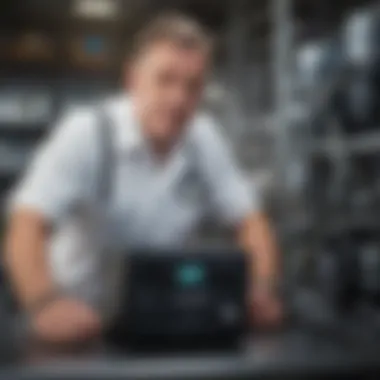
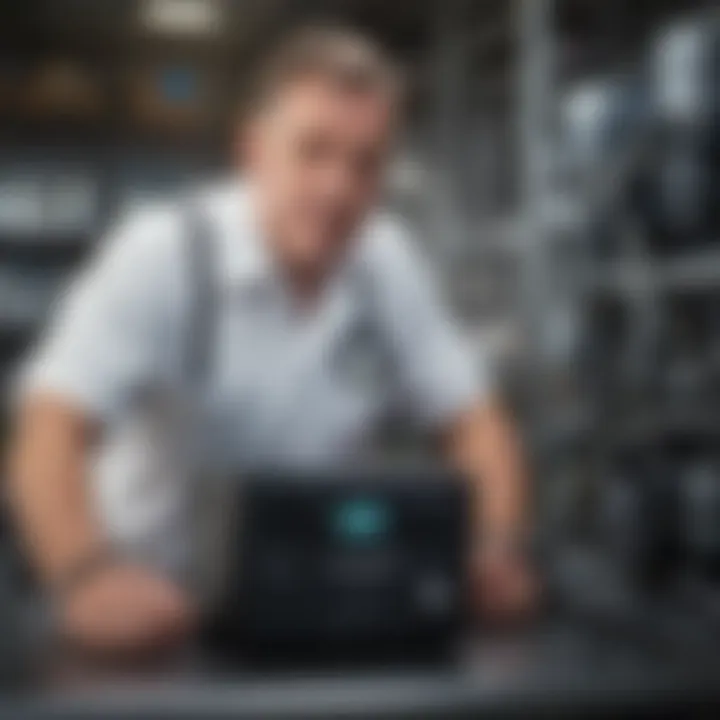
Key Points:
- Lightweight designs: Easier to carry improves life quality.
- Energy savings: Reduces operating costs for patients.
- Long battery life: Extends mobility without frequent charging.
Future Trends in Oxygen Therapy
Looking ahead, several trends in oxygen therapy appear poised to reshape how devices function and are utilized. One such trend is the growing emphasis on personal health data aggregation. As more patients embrace health monitoring devices, oxygen concentrators will likely integrate features that allow seamless communication with other health tracking devices. More data, leads to smarter decisions regarding therapy.
Further, advancements in nanotechnology are creating new possibilities for oxygen generation processes, yielding devices that are even lighter and more compact. This can dramatically improve not only the accessibility of oxygen therapy but also empower patients to take charge of their treatment.
Moreover, as healthcare becomes more personalized, oxygen therapy may evolve into a more integrated aspect of overall health management. Patients could have tailored oxygen delivery systems based on their unique health profiles, directly linking oxygen therapy to their broader health care strategies.
"The future of oxygen concentrators is about merging technology into holistic health management, providing patients with not only oxygen but also data-driven insights for healthier living."
In summary, the advancement of technology in medical oxygen concentrators signifies a considerable leap forward in patient care. From the integration of smart tech to enhanced portability and efficiency, these devices are increasingly adapting to meet the needs of the modern patient.
Monitoring Oxygen Levels
Monitoring oxygen levels is paramount in the context of medical oxygen concentrators and respiratory care. With the rise of various respiratory diseases and conditions that impair lung function, ensuring patients maintain adequate blood oxygen saturation is crucial for their health and well-being. This section explores the significance of this monitoring practice with a focus on its components, benefits, and considerations.
Importance of Blood Oxygen Saturation
Blood oxygen saturation (SpO2) refers to the percentage of oxygen-saturated hemoglobin relative to total hemoglobin in the blood. Maintaining optimal SpO2 levels is essential for several reasons:
- Physiological Functionality: Oxygen is vital for cellular functions. When levels drop, it can lead to hypoxemia, which may cause symptoms ranging from fatigue to severe respiratory failure.
- Clinical Monitoring: For patients with chronic conditions like COPD or asthma, regular monitoring can help detect early signs of deterioration, allowing for timely interventions.
- Guiding Oxygen Therapy: Understanding a patient’s SpO2 is essential when adjusting oxygen therapy settings on concentrators. This ensures patients receive the appropriate amount of oxygen based on their unique needs.
The importance of blood oxygen saturation cannot be overstated; it serves as a critical indicator for healthcare providers to assess respiratory efficiency and intervene when necessary.
Devices for Monitoring
To effectively monitor oxygen levels in patients, various devices are used, each contributing to the overall management of respiratory health:
- Pulse Oximeters: These compact devices are often clipped onto a fingertip, toe, or earlobe, using light absorption to measure heart rate and SpO2 levels quickly. They're renowned for their non-invasive nature and ease of use.
- Arterial Blood Gas (ABG) Analyzers: These more advanced devices measure oxygen and carbon dioxide levels directly from a blood sample. This method provides a comprehensive view of a patient's respiratory status.
- Transcutaneous Monitors: These are often used in hospitals to continuously measure oxygen levels through the skin. This method provides real-time data which can be crucial for critical situations.
- Advantages: Quick readings, no needles needed, portable.
- Limitations: Less effective if circulation is poor or fingernail polish is used.
- Advantages: Offers precise measurements, including blood pH levels.
- Limitations: Invasive and requires clinical expertise for interpretation.
- Advantages: Continuous monitoring allows for immediate response to changes.
- Limitations: Can be affected by skin integrity and temperature.
"Monitoring blood oxygen saturation is not just about numbers; it's about understanding the body's response to treatment and acting accordingly."
When selecting a monitoring device, considerations such as accuracy, invasiveness, and the care setting (home versus clinical) play vital roles in ensuring that patients receive optimal care. Each device has its unique benefits and potential drawbacks, making it essential for users to choose the right tool based on their individual needs and circumstances.
Patient Education and Support
In the realm of healthcare, particularly concerning oxygen therapy, understanding and support stand as foundational pillars for effective treatment. The significance of patient education and support cannot be overstated, especially when it comes to utilizing medical oxygen concentrators. Comprehensive education empowers patients and caregivers alike, enriching their knowledge and fostering confidence. This ultimately can lead to better health outcomes and improved overall quality of life.
Understanding the Role of Oxygen Therapy
Oxygen therapy is a vital intervention for individuals with respiratory conditions, such as chronic obstructive pulmonary disease (COPD), interstitial lung disease, or even those recovering from pneumonia. At its core, oxygen therapy facilitates the delivery of concentrated oxygen to those whose bodies can't suffice with ambient air alone. By augmenting oxygen levels in the bloodstream, it helps prevent complications associated with low oxygen saturation.
It's crucial for patients to grasp how oxygen therapy works and its significance in their specific context. A solid understanding can mitigate fears and misconceptions surrounding its use. For many, it is not just about receiving extra oxygen; it signifies a lifeline that permits them to maintain independence and engage with their daily activities.
Moreover, the effectiveness of oxygen therapy largely hinges on using the equipment correctly. Patients must familiarize themselves with the functioning of oxygen concentrators, which to many can be different from traditional oxygen tanks. They should know how to adjust flow rates, recognize signs of equipment malfunction, and understand the normal parameters of their blood oxygen levels.
Resources for Patients and Caregivers
Navigating the complexities of oxygen therapy can be daunting without the right resources. To equip patients and caregivers with necessary knowledge, healthcare providers should control access to diverse educational materials. These resources can encompass:
- Educational pamphlets or brochures: Clear, concise literature detailing operation procedures and troubleshooting common issues.
- Workshops: Interactive sessions, either in-person or virtual, where patients can learn directly from healthcare professionals.
- Online forums: Platforms such as Reddit or dedicated support groups on Facebook where experiences can be shared, fostering a sense of community and peer support.
- Instructional videos: Visual aids demonstrating correct usage can bridge gaps in understanding for many users.
- Direct access to healthcare professionals: Ensuring that patients have a hotline or email address for urgent inquiries builds a support system that can help manage concerns efficiently.
"A well-informed patient is a powerful ally in their treatment journey. Knowledge dispels fear and enables informed choices."
By cultivating a robust foundation of knowledge and providing ongoing support, the path to managing respiratory health becomes less bewildering, fostering a partnership between patients and healthcare providers that is built on trust and collaboration. Educating patients is not just an add-on; it is a necessary aspect of modern healthcare that warrants continuous focus and enhancement.
Case Studies and Real-World Experiences
Understanding how medical oxygen concentrators operate in the real world is vital for many stakeholders in healthcare. From patients and caregivers to medical professionals, case studies provide insights that illustrate the practical applications, benefits, and even the challenges associated with their use. Real-world experiences enrich the theoretical knowledge by providing actual scenarios demonstrating the devices' effectiveness, as well as the nuances involved in their operation.
Successful Use Cases
The efficacy of medical oxygen concentrators can be witnessed in diverse settings. Some notable successful use cases include:
- Chronic Obstructive Pulmonary Disease (COPD) Management: Many patients with COPD rely on oxygen concentrators to maintain their blood oxygen levels. A study involving a group of COPD patients showed that those who used portable oxygen concentrators experienced improved mobility. One patient, Mrs. Johnson, shared how she can now take strolls in her neighborhood without feeling breathless, which significantly improved her mental wellbeing.
- Emergency Medical Services: In emergencies, like exacerbated asthma or panic attack, units equipped with compact oxygen concentrators have proven invaluable. For example, paramedics in a suburban area reported that having portable units allows them to provide immediate oxygen therapy en route to the hospital, improving patient outcomes during critical moments.
- Home Healthcare: Some families have opted for home-based oxygen therapy for elderly family members. Mrs. Lee�’s family noted that, after setting up a stationary oxygen concentrator in her bedroom, she was able to sleep more soundly at night. This not only improved her health but also enhanced the family's overall quality of life.
These instances underscore the versatility and adaptability of oxygen concentrators across various situations. By illustrating how technologies have directly impacted lives, stakeholders can better appreciate their relevance in healthcare.
Challenges Faced by Users
While medical oxygen concentrators offer substantial advantages, users often encounter hurdles that may complicate their experience. Some of these challenges include:
- Learning Curve: New users might feel overwhelmed by the technology involved. For instance, Mr. Thompson struggled to understand how to set the right flow rate initially, which led to periods of anxiety. He mentioned, "I kept thinking I was doing it wrong, which made me more stressed."
- Dependence on Power: Concentrators require an electrical source. During power outages, patients relying solely on these devices are left without crucial support. For example, residents in areas prone to outages often keep backup battery systems, but the duration can still create concerns for extended outages.
- Limited Portability: While portable models exist, limitations remain regarding battery life and weight. Patients like Ms. Carter frequently express frustration about carrying devices, especially during travel. "I love going out, but I always feel like I'm dragging a suitcase with me, which sometimes makes outings more exhausting than fun."
In these contexts, addressing user experience issues can enhance the overall effectiveness of oxygen concentrators. Awareness of challenges prompts manufacturers and healthcare providers to tailor their solutions better.
Understanding both successful use cases and challenges of oxygen concentrators informs a comprehensive perspective on their roles in modern healthcare.
Adapting strategies based on real-world examples enables a more thoughtful and supportive approach for users, providers, and innovators alike.
Finale and Future Directions
As we look at the ever-evolving landscape of healthcare, it is crystal clear that medical oxygen concentrators are not just a passing trend. Their pivotal role in providing essential respiratory support cannot be overstated. These devices have transformed the way we approach oxygen therapy, making it more accessible, reliable, and efficient.
Summarizing Key Points
In summary, here are some vital takeaways regarding medical oxygen concentrators:
- Functionality and Application: These devices serve multiple environments—home care, hospitals, and emergency situations—highlighting their versatility.
- Types: Understanding different types, like portable and stationary concentrators, is crucial for selecting the right device for specific needs.
- Benefits: Increased mobility, cost-effectiveness, and ease of use are significant advantages users gain, paving the way for better patient outcomes.
- Challenges: While they offer immense benefits, challenges like maintenance, power dependency, and patient compliance persist and must be addressed.
- Future Innovations: The integration of smart technology hints at a promising future, potentially enhancing user experience and operational efficiency.
"The transformation brought about by medical oxygen concentrators represents a leap forward in how we manage respiratory health."
Potential for Innovation
Looking ahead, the potential for innovation in the realm of medical oxygen concentrators is nothing short of exciting. Several factors signal a new wave of advancements:
- Smart Features: Many manufacturers are now incorporating smart technologies, which allow real-time monitoring and adjustments to oxygen delivery, thus improving user experience and medical outcomes.
- Enhanced Portability: Innovations in design and materials are making these devices lighter and more compact, making it easier for patients to use them outside of clinical settings.
- Telemedicine Integration: Oxygen concentrators equipped with connectivity options can integrate with telehealth systems, providing doctors immediate access to patient data for better monitoring and responsive care.
- Sustainability Focus: Companies are increasingly prioritizing eco-friendly practices in both the production and functionality of oxygen concentrators, hinting at a more sustainable approach to healthcare.
As we move forward, the synergy of technology and healthcare holds great promise for those in need of oxygen therapy. By staying attuned to these developments, both medical professionals and patients can better navigate the future of respiratory support.







